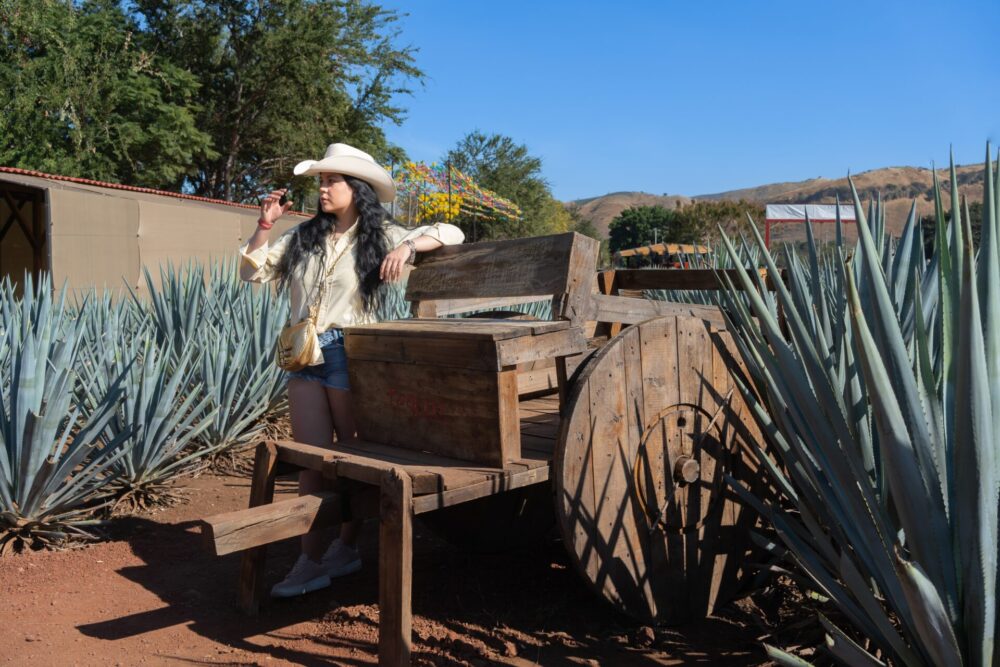
From the volcanic highlands of Jalisco to cocktail bars around the world, tequila is a story distilled from earth, fire, and centuries of tradition. Long before it filled crystal glasses and salted rims, tequila began as a sacred spirit, intertwined with the ancient beliefs of Mexico’s first civilizations.
The Agave: A Gift from the Gods
Tequila’s story starts with the agave, a resilient desert plant revered by the peoples of ancient Mesoamerica. Known as maguey to the Aztecs, the agave provided food, fiber, and most importantly, a sacred beverage called pulque, a fermented drink made from its sweet sap.
Pulque wasn’t a casual refreshment. It was a ritual drink, consumed by priests and nobility during ceremonies dedicated to fertility, harvest, and the gods. It symbolized life’s renewal, flowing from a plant that thrived under the intense Mexican sun.
According to legend, the goddess Mayahuel often depicted with agave leaves sprouting from her body was the divine embodiment of the maguey plant. Stories tell that after her tragic death, her spirit transformed into agave, allowing her gift to sustain humanity. Her husband, Patecatl, was said to be the god of pulque and medicine, linking agave to both healing and celebration.
From Lightning to Liquor
One popular tale says that the first agave spirit was born when a bolt of lightning struck an agave plant, cooking it and releasing its sweet, fermented nectar a “gift from the heavens.” While mythic, this story poetically captures the elements that make tequila what it is: earth, fire, and transformation.
Historically, the real transformation came in the 16th century, when Spanish colonists introduced distillation techniques to Mexico. Indigenous people had already mastered fermentation through pulque, but distillation allowed them to concentrate the spirit and with that innovation, mezcal and later tequila were born.
The first documented production of what we now call tequila occurred in Jalisco, near the town of Tequila, where volcanic soil and high-altitude climate created ideal conditions for growing blue agave (Agave tequilana Weber).
The Sun, the Spirit, and the Symbolism
Though there’s no record of tequila being a literal “sun worship” beverage, it’s impossible to ignore the solar symbolism that runs through its story. The agave thrives in sun-scorched landscapes, storing light and heat within its core and distillation, the process that transforms it into spirit, mirrors the alchemy of sunlight into liquid gold.
For ancient cultures, the sun represented life and vitality; for modern Mexico, tequila represents heritage and endurance warmth shared among friends, generations, and nations.
Every pour of tequila carries that duality: ancient reverence and modern joy, sacred history and everyday celebration.
Tequila Today: Legacy in Every Glass
Today, tequila is protected by Denomination of Origin laws, meaning it can only be produced in certain regions of Mexico. It remains deeply tied to its roots both literally and culturally. The art of harvesting, roasting, fermenting, and distilling agave is still performed by jimadores (agave farmers), whose skill and intuition continue traditions passed down through generations.
From the goddess Mayahuel to the volcanic fields of Jalisco, tequila’s journey reflects Mexico’s soul a spirit of resilience, transformation, and light.
So next time you sip a golden reposado or a crisp blanco, raise your glass to the sun and to the centuries of devotion, mythology, and craftsmanship that made it possible.
Salud.
Sources & Factual References
The Origin and Evolution of Tequila – Celosa Tequila (2023)
The History of Tequila – Beverage Spirit Journal (2024)
Myth of Mayahuel and the Agave – Drops of Mana (2022)
Tequila Denomination of Origin Standards – Consejo Regulador del Tequila (CRT)
Huītzilopōchtli: The Aztec God of the Sun – Encyclopedia of Ancient History
